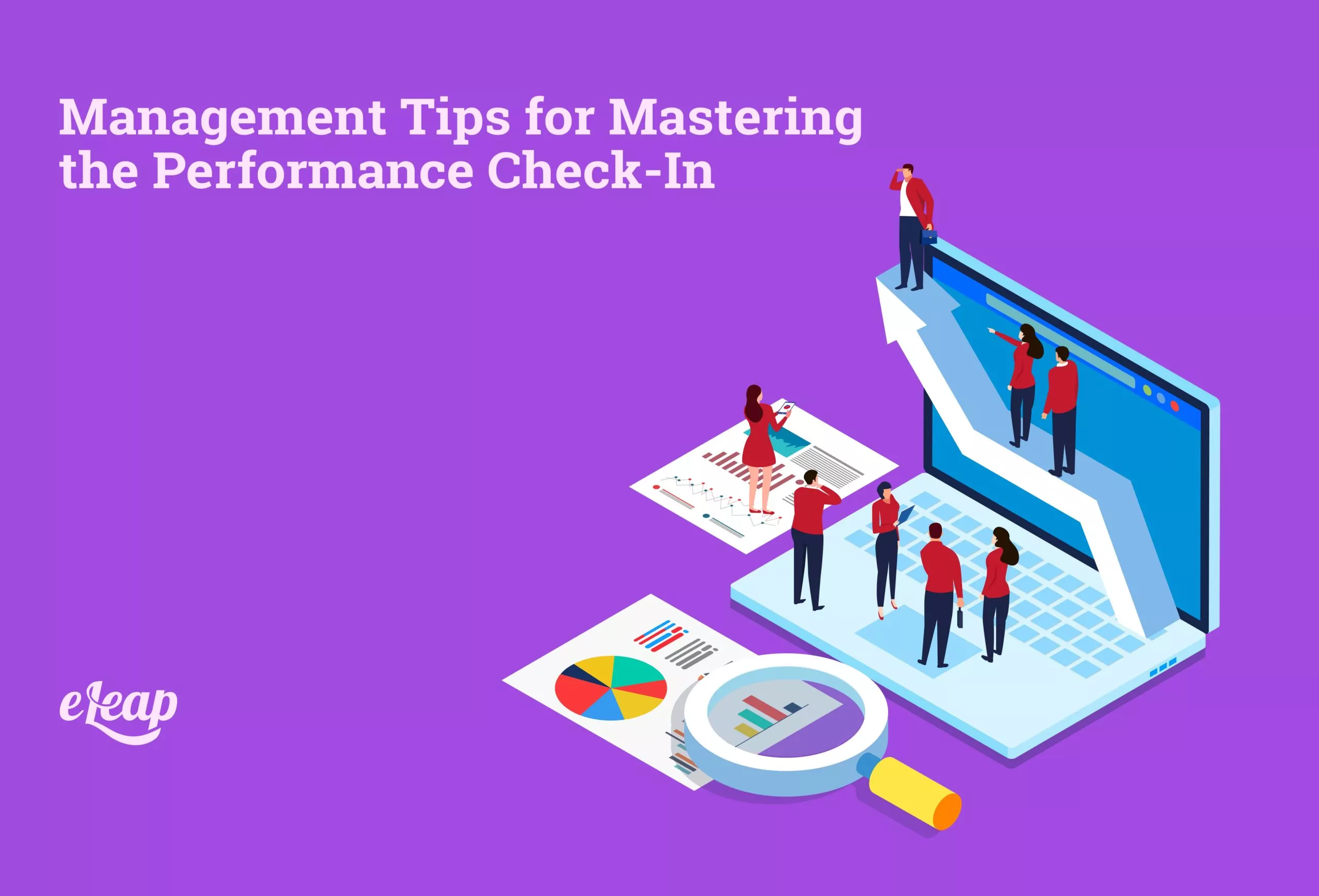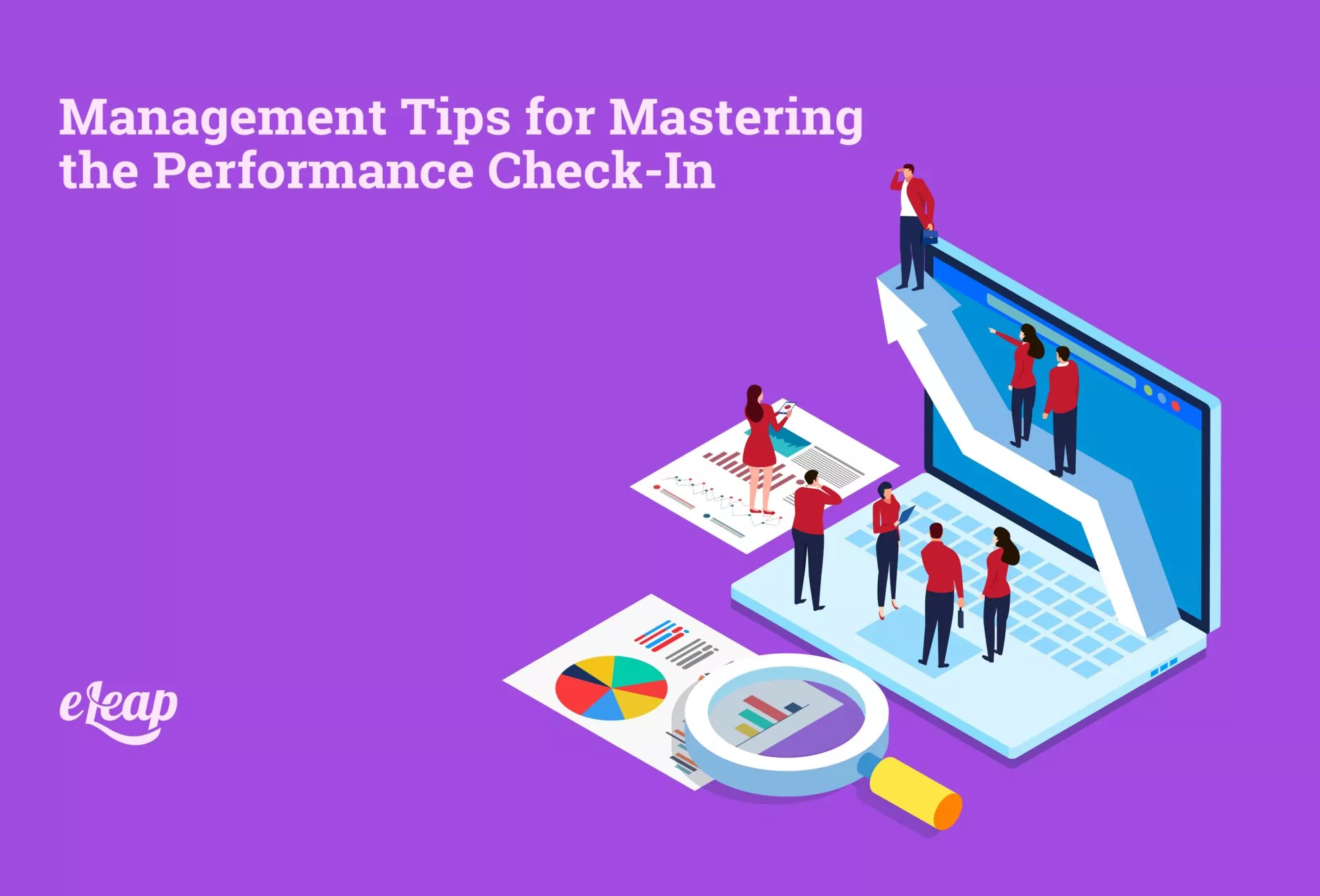Management Tips for Mastering the Performance Check-In

Since the growth in popularity of PMS platforms and performance management practices, many organizations have gotten away from the continuous dialogue between management and team members. However, this is important for shared accountability and constant growth.
When organizations have team members review and update their goals regularly, they are more likely to score on the highest levels of corporate performance. Regular performance check-ins promote shared accountability for performance.
These meetings should be two-way conversations. However, managers should set the pace to guarantee a productive dialogue. These are the most important tips for managers to use for mastering the performance check-in.

What Makes Performance Check-Ins Important?
Regardless of how effective your performance management software is, nothing can replace the human-to-human connection. Certain things can be accomplished with dialogue that are lost in translation in terms of AI. Use the following tips to increase the effectiveness of your performance check-ins.
-
Commit Time
Commit time to your team members and give them your undivided attention. Whenever you have your scheduled meeting, you must eliminate all distractions.
These meetings are normally extremely important to team members, as it’s often the only one-on-one time they’ll get with management. Make sure you dictate the correct amount of time to each meeting.
Review the topics of importance before going into the meeting. This way, you’ll have a firm understanding of how much time you need and what topics need to be discussed.
-
Agree On Purpose
The purpose of the check-in meeting should be agreed upon beforehand. Just as you want to be prepared for the meeting, it’s also important that team members can prepare.
Encourage them to make a short list of topics they would like to discuss, and you must do the same. This way, there’s a mutual understanding, and there are no discrepancies over what the important subject matter of the meeting is.
You mustn’t blindside employees with these meetings. They should never feel like they’re being ambushed and should have ample time to prepare.
Alternatively, you can begin the conversation by asking them what they’d like to discuss. When you let the employee drive the conversation, they don’t feel as defensive or as if they’re being punished.
Another benefit of allowing them to drive the conversation is the fact that they ask questions that promote learning.
-
Recognize Accomplishments
During these meetings, you must recognize team members’ accomplishments. Start the meeting off by bringing up highlights of their performance from the past quarter.
After this, you may transition into things that need to be improved upon. However, explain these things in a way that benefits them.
When you explain to employees the incentives of improvement, it helps by allowing them to understand what’s in it for them. This makes it seem like they have the advantage, and you’re not punishing them.
Finish the meeting by reviewing their achievements one more time. Do a quick review of everything you talked about in the meeting, and congratulate them one more time for a job well done.
-
Ask for Feedback
Ask team members for feedback regarding your own performance as a manager. This not only allows them to vent concerns they have, but it can also promote your growth.
It doesn’t hurt to view things from the team members’ point of view. Getting a fresh viewpoint on things allows you to promote a healthier environment at work.
Additionally, when you ask for their feedback, it lets team members know that you value their opinion. This is strong when it comes to corporate culture.
It also conveys the message to your employees that you understand you’re human. It puts you on the same level and can even the playing field. This ends up driving a much better relationship in the end.
-
Collaborate
Collaborate with your team members to identify key actions moving forward. Engage with them regarding important topics for their personal growth.
It’s also important to receive feedback regarding how they feel about the direction of the company. Ask them if they have any input about the overall direction things are going.
This accomplishes several things. It sends the message that their input is valued and makes them feel like they play a role in the company moving forward.
Additionally, you may get some crucial ideas that can propel your company. It’s never a bad idea to get ideas from all parties involved, especially considering they know your organization inside and out.
-
Set Goals
One of the last things you should do during your meeting is set goals. You should establish a date for the next check-in.
After you’ve established a date, ask them some goals they have for themselves that you can review during the next check-in. This gives you an idea of where their head is regarding how much they believe in their abilities.
If you feel like their goals are set too low, you may tweak them a little bit. You can say it in a way that doesn’t insult them. “That sounds good, but what if we add this based on your strengths?”
When you set goals and establish a date for the next meeting, this gives them a chance to set their sights on improvement. It also gives them a date to aim for and establish a roadmap towards their goals.
In-Person Performance Check-Ins are Valuable
When you place emphasis on performance check-ins, it provides several benefits for your organization. It allows you to get up close and personal with employees. You’ll receive information and get a real sense of how they’re taking on their work.
When you rely solely on a performance management system, there’s no human-to-human connection. It’s nearly impossible to get a pulse on the emotions of employees when you depend solely on AI to give you feedback on certain metrics.
Make these performance check-ins a regular thing. Once per quarter or twice per year should suffice. If you space them out too far, you could miss out on vital information. However, if you schedule them too close, you may not give employees enough time to make the necessary improvements before the meeting. The eLeaP continuous performance management system provides organizations with powerful options to attract and retain high caliber team members.